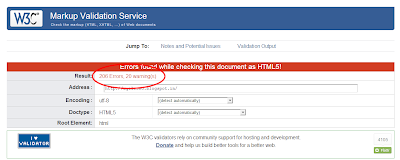Once a SEO professional or agency has been doing Search Engine Optimization for a website for the past 6 months it is natural for the business owner to find out if the exercise has been successful or not. To measure success of any task performance indicators are needed. In this post I will define the key performance indicators for Search Engine Optimization (SEO).
Goals of SEO = Goals of Business
 At the end of the day websites that are selling products would measure success of all the activities by finding outextra revenue has been generated which can be attributed to a particular activity.At the end of the day a business man will consider increase in revenue as the criteria for success. However, it is easier said than done as it is tough to pin point which activity drove the actual customers to buy the product or service.
At the end of the day websites that are selling products would measure success of all the activities by finding outextra revenue has been generated which can be attributed to a particular activity.At the end of the day a business man will consider increase in revenue as the criteria for success. However, it is easier said than done as it is tough to pin point which activity drove the actual customers to buy the product or service.how much
Keyword mapping makes it easier to judge the success of a particular keyword and its related content. By studying the keyword map of your website you can easily identify which pages are getting the most number of visits. Evaluation should be taken further by also evaluating which landing pages are converting the most. Analyzing both the aspects would help you understand if your SEO program is reaping benefits or not.
Studying SEO data
At times customers start looking at the analytics data (Google Analytics)on a daily basis which is a dangerous practice. The excuse for studying the analytics data everyday is that the business owners do not want to miss out any trends which might hurt them later. I agree with the business owners on this but going into the details of analytics data is waste of time. The data sample of a day is too small and deducing trends from it would land you in big trouble.
Typically studying the analytics data on a monthly basis is best. It is advisable to export the analytics data into MS Excel and then make complex analysis than just looking at the standard reports which an analytics program might provide. By studying this data you can actually find out the keywords that are actually driving visitors to a website and generating the biggest revenue.
However, it does not end here. An analysis needs to be done whether the landing pages are getting the right visitors. In other words did the visitor who came to the landing actually conducted a search using those keywords which are targeted by the landing page. If that is not the case then the page needs to be tweaked to achieve the maximum benefit.
Typically studying the analytics data on a monthly basis is best. It is advisable to export the analytics data into MS Excel and then make complex analysis than just looking at the standard reports which an analytics program might provide. By studying this data you can actually find out the keywords that are actually driving visitors to a website and generating the biggest revenue.
However, it does not end here. An analysis needs to be done whether the landing pages are getting the right visitors. In other words did the visitor who came to the landing actually conducted a search using those keywords which are targeted by the landing page. If that is not the case then the page needs to be tweaked to achieve the maximum benefit.
Archiving analytics data
Analytics data needs to be archived as most of the analytics systems do not archive the data. Whenever you see a new trend the old data does come handy to investigate the sharp drop in SEO.
It is important to monitor the indexation and crawling of the website to ensure that organic search traffic does come to the website. At least the monitoring of the indexation of the major pages and landing pages should be done on a regular basis. Monitoring the index status is done best through Webmasters Tool (another reason to implement Google Webmasters Tools).
Keep track of the data by downloading the reports and analyzing them. This will help you understand the value of SEO and also get to know the scenarios that work best for you




